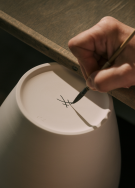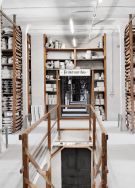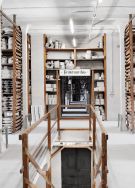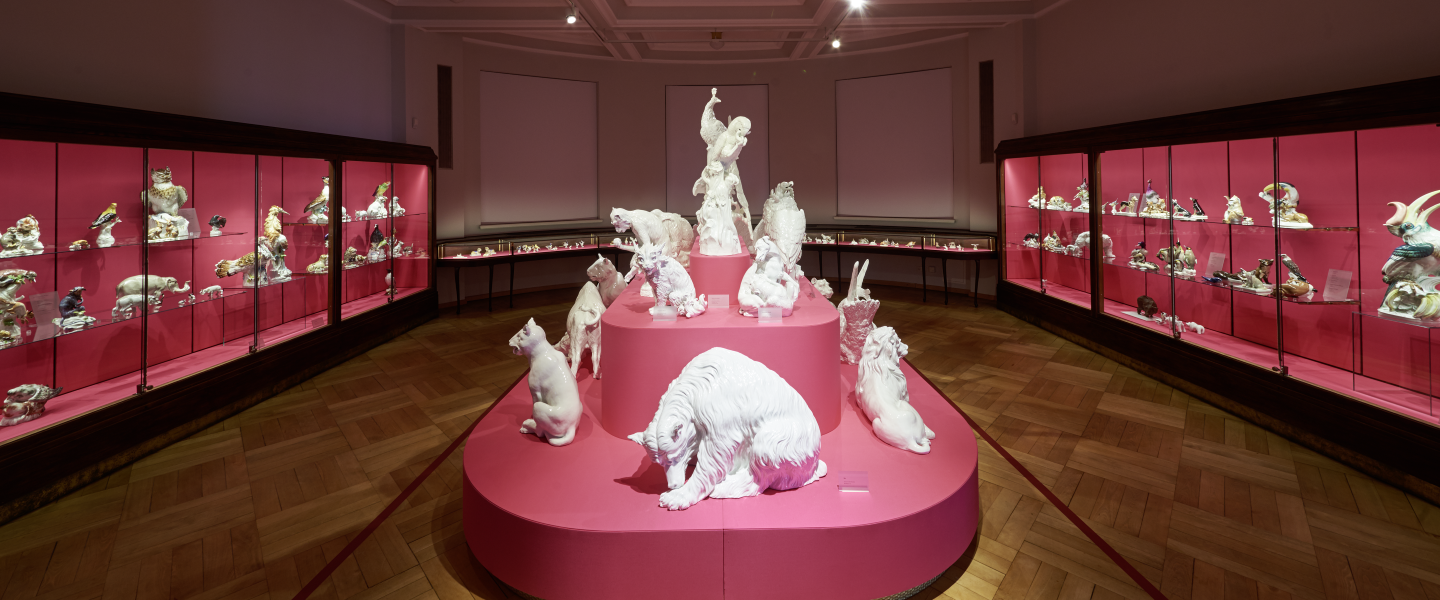
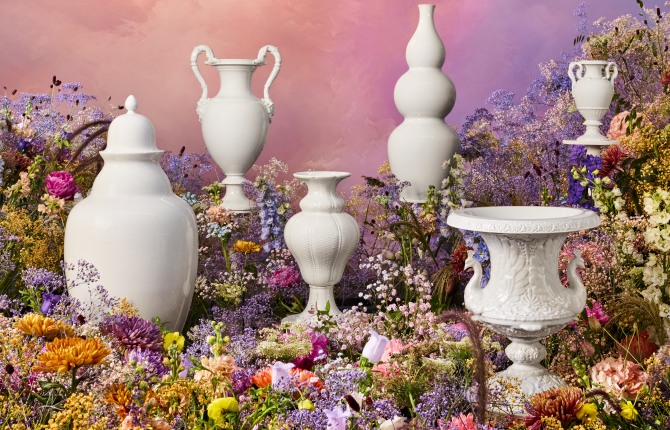
Maladie 2.0
Ten Years of the Meissen Porcelain Foundation
Exhibition at the Museum of the Meissen Porcelain Foundation, March 21, 2025 – February 22, 2026
Since its founding in 2014, the Meissen Porcelain Foundation has passionately preserved the cultural heritage of Meissen porcelain. This anniversary exhibition showcases delicate artworks, tells captivating stories, and celebrates the fascination for the "white gold." Discover how historical tools transform into modern art and how collecting itself becomes an art form.
Exhibition - Artists in Residence 2009–2023
The Manufactory’s then director Max Adolf Pfeiffer ushered in an artistic heyday back in the 1920s by enlisting the services of outside artists to a far greater extent than hitherto, notably those of Ernst Barlach, Paul Scheurich and Gerhard Marcks. And it is still common practice at Meissen today to produce art objects for which no master models or potter’s moulds are made and which are truly “one-offs” as a result. Contemporary artists from home and abroad are regularly invited to Meissen for this purpose. They have the vast expertise amassed by the Manufactory and its artisan staff at their disposal during their stay in Meissen as they go about putting their ideas to effect. They are nevertheless free of artistic constraints and may operate in the fields of utilitarian wares or out-and-out art or, indeed, both.
The exhibition showcases items by artists from the most diverse of nations. The Manufactory’s artists-in-residence scheme has been taken up by creative minds from Syria, Tunisia and India but also from South Korea, the USA, Switzerland and, of course, Germany, and these have been a rich source of fresh stimuli.
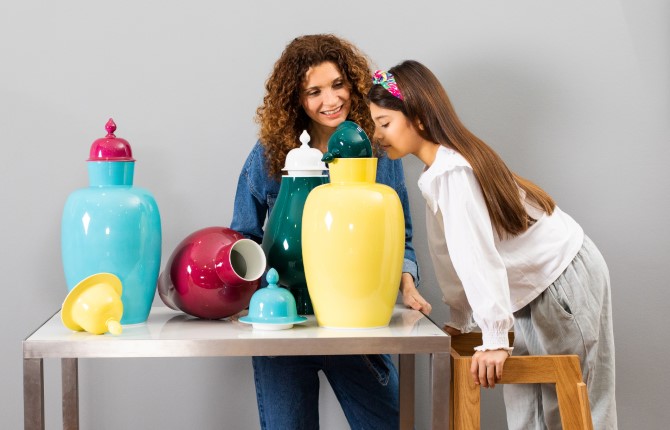
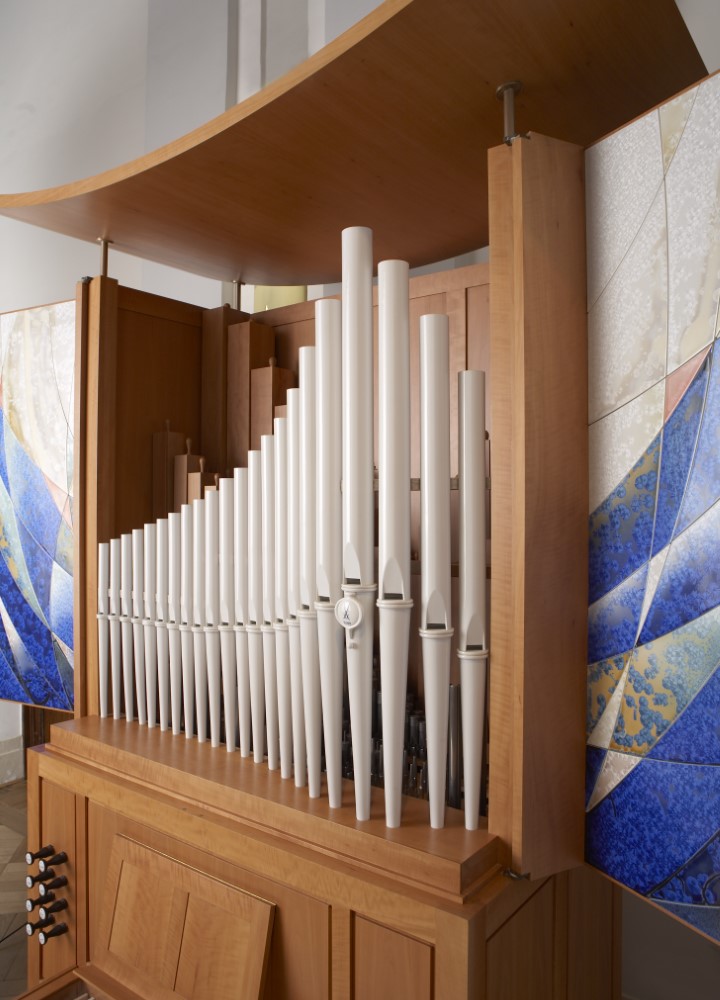
The world‘s first organ made of MEISSEN porcelain
The world’s first organ to feature pipes made of MEISSEN Porcelain is a consummate example of porcelain art.
Augustus the Strong, founder of the Manufactory, had commissioned an organ with porcelain pipes to be made way back in the early 18th century. It was not until the year 2000 that the job was completed, though.
Guests from all over the world have been succumbing to the magic of music produced by MEISSEN Porcelain pipes ever since.
Listen to the contrast between wooden, metal and porcelain pipes, when they guide through ages like the museum does.
Dates: by prior arrangement
Price: € 200.-/group, € 1.- seating per person if group consists of more than 30 persons
Duration: 15-20
Digitally relive the invention of Europe’s first porcelain
In a new exhibition area, the Museum lets visitors delve into the mysterious origins of Meissen porcelain with the aid of a special multivisual presentation.
Dynamic lighting and vivid projections combine with historical exhibits in finest porcelain and, at their heart, the “Philosopher’s Stone” to bring the space dramatically alive. Text inserts and film sequences allow the Meissen Manufactory’s genesis more than 300 years ago to be interactively experienced – visitors learn much of interest about Johann Friedrich Böttger, famous alchemist and inventor of Meissen porcelain, and those who assisted him. There is no extra charge for this presentation, which can be viewed in either German or English.
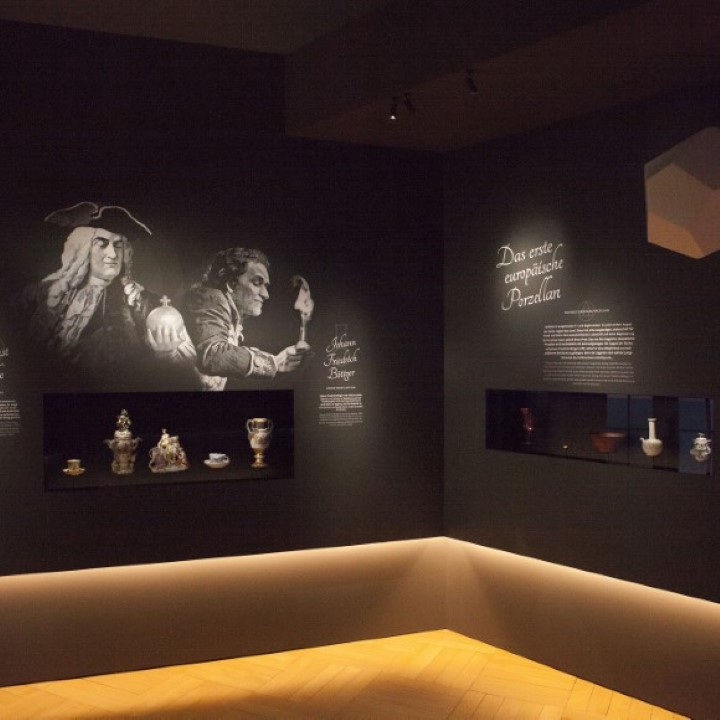
„From "Snowball Blossoms" and the "Swan Service" all the way to contemporary sculptures – the Meissen manufactory’s legacy is unparalleled in the history of European porcelain.“




